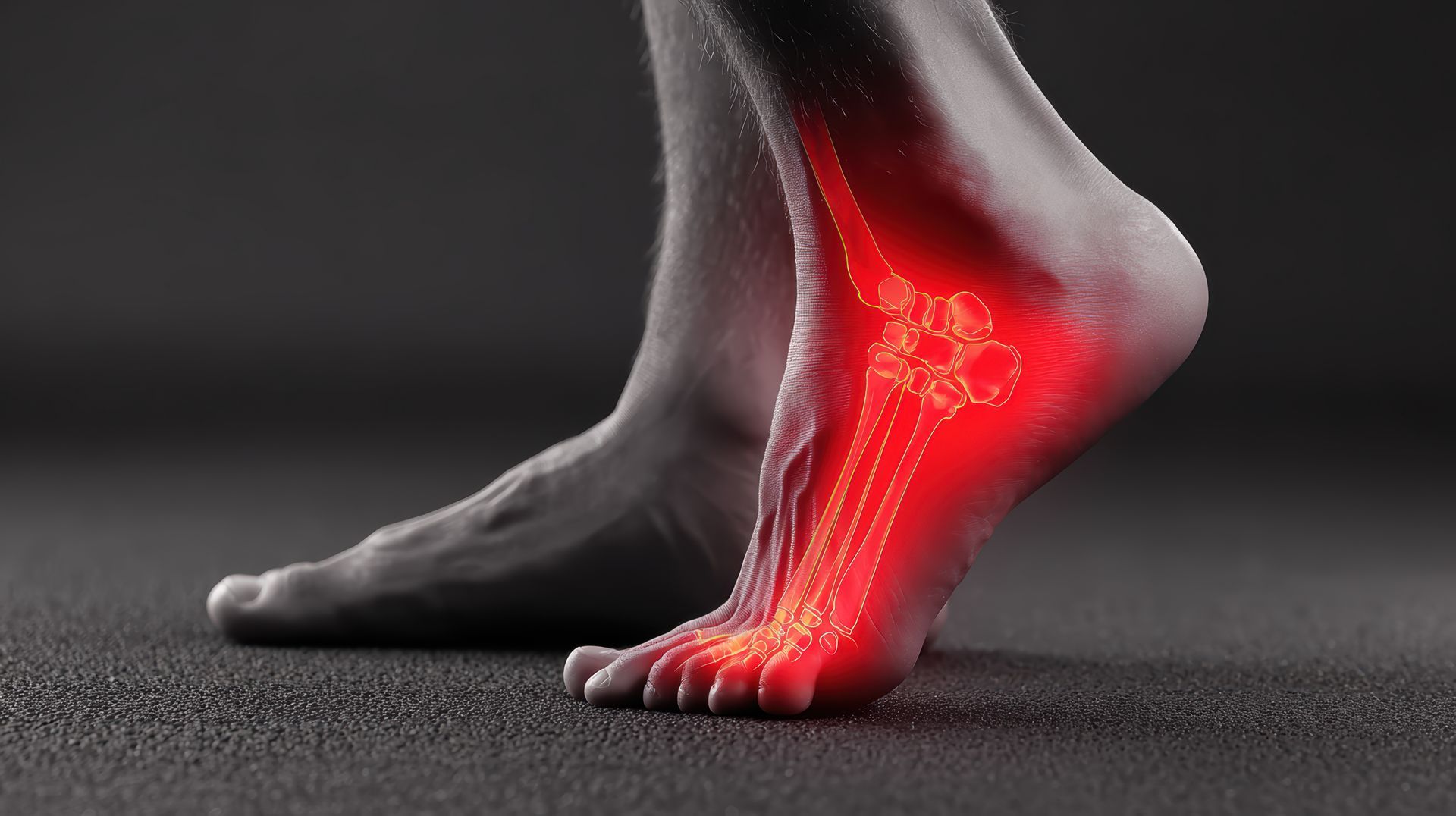Nutrition and Managing Chronic Joint Pain
Chronic joint pain is a debilitating condition that affects millions of people worldwide. While traditional treatments often involve medications or surgical interventions, there is growing interest in holistic approaches that emphasize lifestyle changes, particularly in diet and nutrition.
Understanding Chronic Joint Pain
Chronic joint pain is a persistent discomfort in the joints, often lasting for months or even years. It can stem from various conditions such as osteoarthritis, rheumatoid arthritis, gout, or lupus. The pain can range from mild to severe and is often accompanied by stiffness, swelling, and a reduced range of motion.
The impact of chronic joint pain on daily life can be profound. It can hinder one's ability to perform everyday tasks, affect sleep quality, and even lead to emotional distress. Traditional treatments often involve medications or surgical interventions. Many are now exploring holistic approaches to manage pain, focusing on lifestyle changes, including diet and nutrition.
The Connection Between Nutrition and Joint Health
The food we consume plays a significant role in our overall health, including the health of our joints. A balanced diet can help reduce inflammation, a key contributor to joint pain. Inflammation is the body's response to injury or illness, but chronic inflammation can lead to ongoing pain and tissue damage.
Essential Nutrients for Joint Health
Omega-3 Fatty Acids: Sources and Benefits
Omega-3 fatty acids, found in fatty fish like salmon and mackerel, flaxseeds, and walnuts, are known for their anti-inflammatory properties. They help reduce joint stiffness and pain, particularly in conditions like rheumatoid arthritis.
Antioxidants: Vitamins C and E
Antioxidants such as vitamins C and E play a crucial role in protecting joint tissues from oxidative stress. Vitamin C is abundant in citrus fruits, strawberries, and bell peppers, while vitamin E can be found in nuts, seeds, and green leafy vegetables.
Minerals: Calcium, Magnesium, and Zinc
Calcium and magnesium are vital for bone health, while zinc supports the repair of joint tissues. Dairy products, leafy greens, nuts, and seeds are excellent sources of these minerals.
Collagen and Gelatin: Supporting Joint Structure
Collagen and gelatin, found in bone broth and certain supplements, help maintain the integrity of cartilage and improve joint flexibility.
Role of Vitamin D in Bone and Joint Health
Vitamin D is essential for calcium absorption and bone health. Sunlight exposure and foods like fortified dairy products, fatty fish, and egg yolks can help maintain adequate vitamin D levels.
Anti-Inflammatory Foods to Include in Your Diet
Fatty Fish and Omega-3 Rich Foods
Incorporating fatty fish such as salmon, mackerel, and sardines into your diet can provide a rich source of omega-3 fatty acids, which help reduce inflammation.
Fruits and Vegetables: Berries, Leafy Greens, and More
Fruits and vegetables are packed with antioxidants and anti-inflammatory compounds. Berries, spinach, kale, and broccoli are particularly beneficial for joint health.
Nuts and Seeds: Benefits and Best Choices
Nuts and seeds, including almonds, walnuts, chia seeds, and flaxseeds, offer healthy fats and anti-inflammatory properties.
Whole Grains and Fiber-Rich Foods
Whole grains like brown rice, quinoa, and oats are high in fiber, which can help reduce inflammation.
Spices and Herbs: Turmeric, Ginger, and Garlic
Turmeric, ginger, and garlic are known for their potent anti-inflammatory effects. Incorporating these spices into your meals can help manage joint pain.
Foods to Avoid for Better Joint Health
Processed Foods and Sugars
Processed foods and sugars can increase inflammation and exacerbate joint pain. Limiting the intake of sugary snacks, sodas, and processed meals is advisable.
Trans Fats and Hydrogenated Oils
Trans fats and hydrogenated oils, often found in fried foods and baked goods, can promote inflammation. Opt for healthier fats like olive oil and avocado.
Excessive Alcohol and Caffeine
High consumption of alcohol and caffeine can lead to dehydration and increased inflammation. Moderation is key to maintaining joint health.
Foods High in Purines: Red Meat and Certain Seafood
Red meat and certain seafood are high in purines, which can lead to increased uric acid levels and gout flare-ups. Reducing intake of these foods can help manage joint pain.
Practical Tips for Incorporating Anti-Inflammatory Foods
Meal Planning and Preparation Strategies
Planning meals ahead of time can ensure a balanced diet rich in anti-inflammatory foods. Batch cooking and using fresh, local ingredients can make meal prep easier.
Simple Recipes for Joint Health
Incorporate simple recipes like grilled salmon with quinoa and steamed vegetables, or a berry smoothie with spinach and chia seeds. These meals are both nutritious and easy to prepare.
Tips for Dining Out and Making Healthy Choices
When dining out, opt for grilled or baked dishes, and choose restaurants that offer fresh, wholesome ingredients. Avoid fried and heavily processed menu items.
Complementary Non-Invasive Treatments
Overview of Non-Surgical, Non-Opioid Treatments
Non-invasive treatments such as chiropractic care, physical therapy, and regenerative therapies can complement nutritional strategies. These treatments focus on improving joint function and reducing pain without the need for surgery or opioids.
How Nutrition Complements Treatments like Chiropractic Care and
Regenerative Therapies
A balanced diet supports the body's natural healing processes, enhancing the effectiveness of treatments like chiropractic care and regenerative therapies. Proper nutrition can aid in tissue repair and reduce inflammation, leading to better outcomes.
Local Resources and Support in Richmond, Virginia
Community Programs and Workshops on Nutrition
Richmond offers various community programs and workshops focused on nutrition and joint health. These programs provide valuable information and support for those managing chronic pain.
Local Farmers' Markets and Health Food Stores
Richmond's farmers' markets and health food stores, such as the South of the James Market and Ellwood Thompson's, offer fresh, local produce and organic products that can support a healthy diet.
Support Groups and Networks for Chronic Pain Management
Support groups and networks in Richmond provide a platform for individuals to share experiences and strategies for managing chronic pain. These groups can offer emotional support and practical advice.
By focusing on nutrition and incorporating anti-inflammatory foods, individuals can take proactive steps towards managing chronic joint pain. Coupled with non-invasive treatments available in Richmond, this holistic approach can lead to improved joint health and overall well-being. Making informed dietary choices, utilizing local resources, and seeking complementary therapies can collectively pave the way for a healthier, pain-free life.
For more information on managing chronic joint pain through nutrition and other holistic approaches,
contact Chronic Care of Richmond today, our team is dedicated to providing personalized care and support to help you achieve optimal health and wellness.




